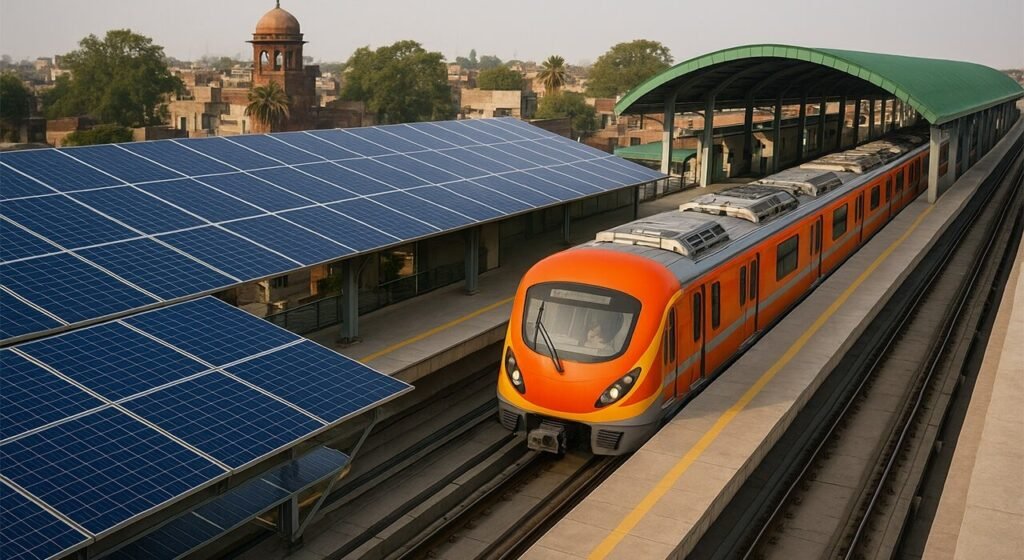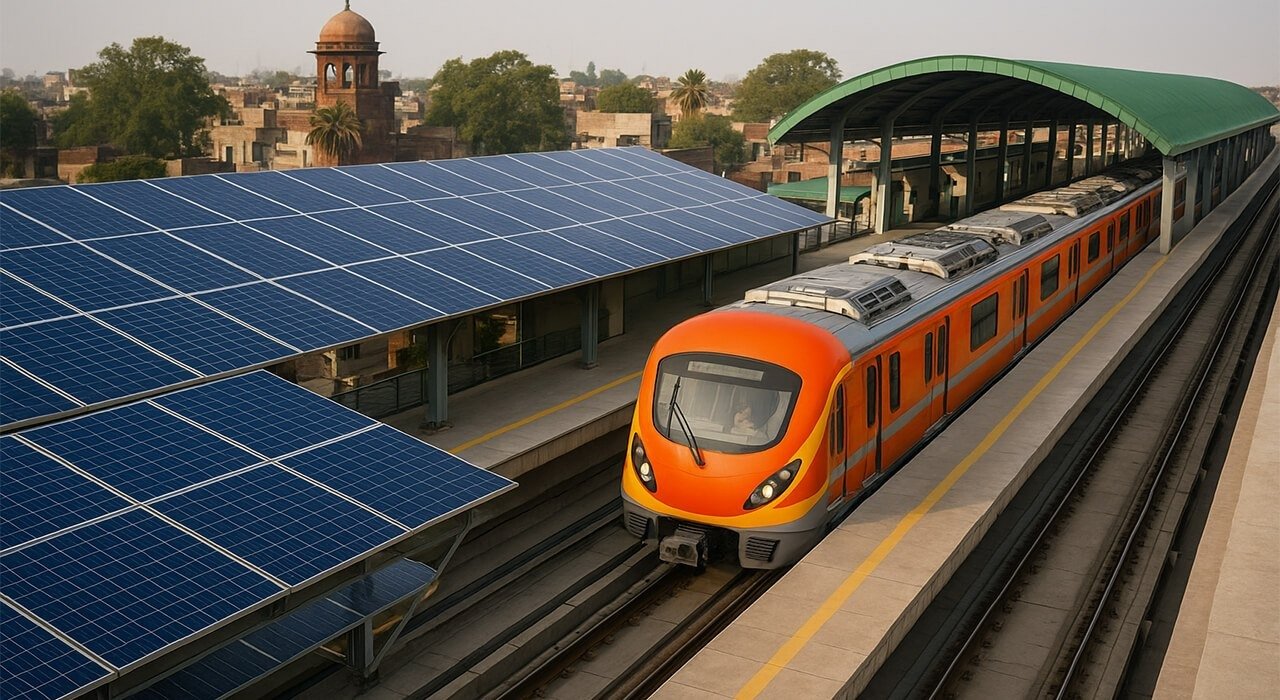Punjab unveils solar conversion at Orange Line Train Stations in a transformative step toward cleaner energy solutions for public transit. A 1.6 megawatt solar power plant now powers every Orange Line station, supplying electric stairs, platform power, and other station operations. Moreover, this shift will reduce operational expenses and drastically lower reliance on the national grid. As a result, metro services become more cost-effective and climate-friendly. Officials expect crores of rupees in savings each month, thereby easing the burden of government subsidy on the provincial budget. Furthermore, commuters will experience fewer interruptions due to load shedding, underscoring Punjab’s commitment to sustainable, affordable energy solutions. For more latest news checkout, Pakistan coverage.
Solar Conversion
Punjab unveils solar conversion at Orange Line Train Stations with a 1.6 megawatt solar power plant feeding every station. Indeed, this solar energy adoption marks a big shift as Lahore Metro’s sustainability drive now powers escalators, electric stairs, lighting, platforms, and ticketing systems entirely off-grid. This project helps reduce reliance on the national grid and demonstrates cleaner energy solutions as part of Punjab’s public transport vision.
Cost Savings
Punjab currently funds Orange Line with confirmed government subsidy of roughly Rs 7 billion annually. In particular, the government now spends about Rs 1.9 billion per month on electricity alone. By shifting to solar, officials forecast crores of rupees in monthly electricity savings. Consequently, operational costs will decline, subsidy outflows will shrink, and public funds can be redirected toward transit expansion or upgrades. Meanwhile, commuters benefit from more reliable service with fewer power disruptions.
Technical Specs
Punjab will install a dedicated 1.6 megawatt solar power plant to power all 26 Orange Line Train Stations—including station lighting, escalators, platforms, HVAC, and ticketing operations. The Orange Line itself spans 27.1 km, hosts 26 stations, and runs 27 driverless five-car trains on a 750 V DC third rail system. Thus, the solar plant is sized to match average station load and ensure smooth operations. Panels and inverters will be installed on station rooftops and nearby depots. Accordingly, station power will remain uninterrupted even during grid outages. To get all the latest news, click here.
Wider Trends

Punjab’s solar move follows broader household solar adoption trends. Many citizens now install rooftop panels to tackle frequent load shedding and rising energy bills. In fact, solar systems are becoming increasingly common even in densely populated urban areas. By leveraging this trend at institutional scale, the transit project sets an important precedent.
The Orange Line solar conversion also echoes major efforts like the Quaid‑e‑Azam Solar Park, while joining other government-led clean energy schemes. Thus, this public transport initiative supports renewable energy adoption across Punjab and reduces carbon emissions.
Sustainability
This initiative helps reduce carbon footprint by replacing grid‑based electricity with renewable solar power. Consequently, emissions fall, supporting urban climate goals and improving air quality in Lahore. As a public transport project, it shows how infrastructure can remain reliable and affordable while advancing sustainability. Lahore Metro’s shift to solar reinforces its green narrative. By powering stations on solar, Orange Line trains become greener and serve the community better without heavy subsidy burdens or grid vulnerabilities.
Next Steps
Punjab officials will monitor energy generation and actual monthly electricity cost savings once the solar plant is operational. If metrics match projections, authorities may expand solar coverage to train yards or integrate battery storage systems for night use. They might also explore feeding surplus energy back into the national grid or replicating solar systems at other transit sites.
Community outreach will educate commuters and local citizens about solar benefits and invite feedback. Additionally, maintenance teams will train in solar operations to ensure long‑term system reliability. Ultimately, these initiatives may inspire further solar adoption across public facilities throughout Punjab.
Conclusion
Punjab unveils solar conversion at Orange Line Train Stations is a bold step toward cutting subsidy expenses and powering transit with cleaner energy. This shift lowers operational costs, reduces dependence on the national grid, and enhances affordability. As a case study in renewable energy adoption, it sets a precedent for future green infrastructure investments across Punjab and beyond. To Get all the news and updates from Pakistan, click here.
Frequently Asked Questions (FAQs)
How many stations are there in Orange Line train?
There are 26 stations on the Orange Line, including 24 elevated and 2 underground.
How many stations are in the Orange Line?
The line spans 27.1 km connecting Ali Town to Dera Gujran, covering 26 stations.
Does Orange have a train station?
Yes, Lahore’s Orange Line Metro Train operates across 26 stations, including major stops like Anarkali and Lahore Railway Station.
Is Orange train government or private?
The Orange Line Metro is a fully public-sector project, managed by Punjab Mass Transit Authority.
What is the longest metro line in the world?
Currently, the world’s longest metro circle line is Moscow’s Bolshaya Koltsevaya line, at roughly 57.5 km.








